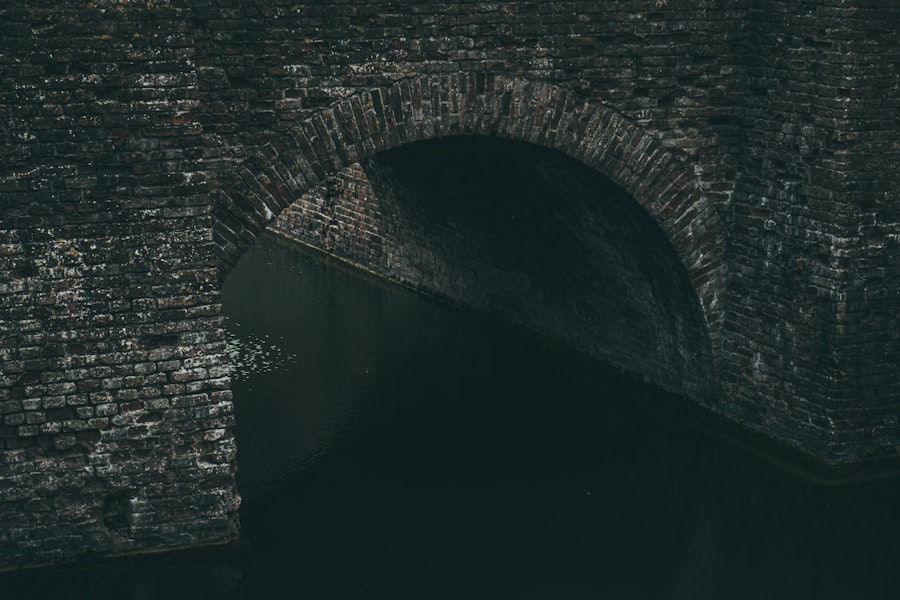The Drake Passage, a body of water that separates South America from Antarctica, is renowned for its tumultuous seas and breathtaking vistas. Named after the English explorer Sir Francis Drake, who navigated these waters in the late 16th century, the passage has become a significant route for maritime travel and exploration. It serves as a gateway for adventurers seeking to explore the icy landscapes of Antarctica, as well as a critical area for scientific research and ecological studies.
The Drake Passage is not merely a geographical feature; it embodies the spirit of exploration and the challenges that come with venturing into the unknown. For many, crossing the Drake Passage is a rite of passage, a test of endurance and resilience against nature’s formidable forces. The allure of its wild beauty and the promise of encountering unique wildlife draw travelers from around the globe.
However, this journey is not without its risks, as the passage is infamous for its unpredictable weather and rough seas. Understanding the intricacies of this maritime corridor is essential for anyone considering a voyage through its waters.
Key Takeaways
- The Drake Passage is a treacherous body of water located between South America’s Cape Horn and the South Shetland Islands of Antarctica.
- The geography and climate of the Drake Passage are characterized by strong winds, rough seas, and unpredictable weather patterns due to its location as a funnel for the Antarctic Circumpolar Current.
- The Drake Passage holds historical significance as a route for early explorers and has been the site of many expeditions, including those of Sir Francis Drake and Charles Darwin.
- Navigating the Drake Passage poses challenges and dangers such as extreme weather conditions, icebergs, and strong currents, making it one of the most difficult sea routes in the world.
- Strategies for navigating the Drake Passage safely include careful route planning, experienced crew, and modern technology such as satellite navigation and weather forecasting.
- Proper preparation and planning are crucial for a journey through the Drake Passage, including obtaining necessary permits, ensuring vessel seaworthiness, and packing appropriate gear for the harsh conditions.
- Tips for dealing with sea sickness and rough seas in the Drake Passage include staying hydrated, getting plenty of rest, and using medication or natural remedies to alleviate symptoms.
- The Drake Passage is home to diverse wildlife and natural wonders, including whales, seals, and seabirds, as well as stunning icebergs and glaciers.
- Modern technology plays a crucial role in navigating the Drake Passage, providing real-time weather updates, communication with other vessels, and emergency assistance if needed.
- Travelers who have crossed the Drake Passage share stories of adventure, resilience, and the awe-inspiring experience of witnessing the remote and pristine beauty of the Antarctic region.
- In conclusion, the allure and adventure of crossing the Drake Passage lie in its challenging nature, rich history, and the opportunity to witness the breathtaking natural wonders of the Southern Ocean.
Understanding the geography and climate of the Drake Passage
The Drake Passage spans approximately 800 kilometers (500 miles) between Cape Horn at the southern tip of South America and the Antarctic Peninsula. This narrow stretch of ocean is characterized by its deep waters, which can reach depths of over 4,000 meters (13,000 feet). The geography of the passage is shaped by the convergence of several ocean currents, including the Antarctic Circumpolar Current, which flows from west to east around Antarctica.
This current plays a crucial role in regulating global climate patterns and influences marine biodiversity in the region. The climate of the Drake Passage is notoriously volatile, with rapid changes in weather conditions that can occur within minutes. Storms can arise suddenly, bringing strong winds and towering waves that challenge even the most seasoned mariners.
The combination of frigid waters and unpredictable weather creates an environment that demands respect and caution from those who dare to navigate its depths.
Historical significance and exploration of the Drake Passage

The historical significance of the Drake Passage cannot be overstated. It has long been a critical route for explorers, scientists, and adventurers seeking to uncover the mysteries of Antarctica. Sir Francis Drake’s expedition in 1578 marked one of the first recorded crossings of this treacherous waterway, paving the way for future explorations.
His journey not only contributed to the mapping of uncharted territories but also ignited interest in the southern seas among European powers. Throughout history, numerous expeditions have traversed the Drake Passage, each contributing to our understanding of this remote region. Notable figures such as Ernest Shackleton and Robert Falcon Scott embarked on their legendary voyages through these waters, facing immense challenges in their quest for discovery.
The passage has served as a backdrop for tales of bravery and perseverance, highlighting humanity’s relentless pursuit of knowledge and adventure in the face of adversity.
Challenges and dangers of navigating the Drake Passage
| Challenges and Dangers of Navigating the Drake Passage |
|---|
| Rough seas and strong winds |
| Potential for icebergs and ice floes |
| Narrow and unpredictable navigational route |
| Extreme weather conditions |
| Isolation and limited access to assistance |
| Potential for seasickness and motion discomfort |
Navigating the Drake Passage presents numerous challenges that can test even the most experienced sailors. The passage is notorious for its rough seas, with waves often reaching heights of 10 meters (33 feet) or more during storms. These conditions can create a perilous environment for vessels, leading to capsizing or other maritime disasters if proper precautions are not taken.
The unpredictable nature of the weather adds another layer of complexity, as storms can develop rapidly and without warning.
The presence of these icy obstacles requires constant vigilance and skillful maneuvering to avoid collisions.
Furthermore, the remoteness of the Drake Passage means that assistance may be far away in case of an emergency, making it imperative for sailors to be well-prepared and equipped for any situation they may encounter.
Strategies for navigating the Drake Passage safely
To navigate the Drake Passage safely, mariners must employ a variety of strategies that prioritize preparation and adaptability. One essential approach is to monitor weather forecasts closely before embarking on a journey through these waters. Utilizing advanced meteorological tools can provide valuable insights into upcoming weather patterns, allowing sailors to make informed decisions about when to set sail or whether to delay their departure.
Another critical strategy involves ensuring that vessels are equipped with appropriate safety gear and technology. Life rafts, emergency beacons, and communication devices are vital components that can enhance safety during a crossing. Additionally, having experienced crew members on board who are familiar with the unique challenges posed by the Drake Passage can significantly improve a vessel’s chances of navigating successfully through its turbulent waters.
Importance of proper preparation and planning for a journey through the Drake Passage

Proper preparation and planning are paramount for anyone considering a journey through the Drake Passage. This begins with thorough research into potential routes, weather conditions, and safety protocols. Travelers should familiarize themselves with the specific challenges they may face during their crossing and develop contingency plans to address any unforeseen circumstances.
Moreover, physical preparation is equally important. Individuals embarking on this journey should ensure they are in good health and capable of handling the physical demands that come with navigating rough seas. Engaging in fitness training or practicing sea survival skills can bolster confidence and readiness for what lies ahead.
Ultimately, meticulous planning can make all the difference between a successful crossing and a harrowing experience.
Tips for dealing with sea sickness and rough seas in the Drake Passage
Sea sickness is a common affliction among travelers crossing the Drake Passage, given its notorious reputation for rough seas. To mitigate this discomfort, individuals can take several proactive measures before and during their journey. One effective strategy is to choose accommodations on larger vessels that are better equipped to handle turbulent waters, as these ships tend to experience less motion than smaller boats.
Additionally, travelers should consider taking anti-nausea medications prior to departure or using natural remedies such as ginger or acupressure bands. Staying hydrated and consuming light meals can also help alleviate symptoms associated with sea sickness. Finding a stable spot on deck or focusing on the horizon can provide relief during particularly choppy moments at sea.
Wildlife and natural wonders of the Drake Passage
Despite its challenges, the Drake Passage is home to an array of wildlife and natural wonders that captivate those who venture through its waters. The region serves as a vital habitat for various species of marine life, including whales, seals, and seabirds. Travelers may have the opportunity to witness majestic humpback whales breaching or playful sea lions basking on ice floes.
The stunning landscapes surrounding the passage also contribute to its allure. Towering icebergs glisten in shades of blue and white against the backdrop of rugged mountains, creating a breathtaking panorama that leaves an indelible mark on visitors’ memories. The unique combination of wildlife encounters and dramatic scenery makes crossing the Drake Passage an unforgettable experience for adventurers seeking to connect with nature.
The role of modern technology in navigating the Drake Passage
Modern technology has revolutionized navigation in challenging environments like the Drake Passage. Advanced GPS systems provide precise positioning information that enhances safety during crossings, allowing mariners to chart their course with greater accuracy than ever before. Additionally, sophisticated radar systems enable vessels to detect obstacles such as icebergs or other ships in real-time.
Communication technology has also improved significantly, allowing sailors to stay connected with shore-based support teams or other vessels in their vicinity. This connectivity can be crucial during emergencies or when seeking assistance in adverse conditions. As technology continues to evolve, it plays an increasingly vital role in ensuring safer navigation through one of the world’s most challenging maritime corridors.
Stories and experiences of travelers who have crossed the Drake Passage
The stories shared by travelers who have crossed the Drake Passage are often filled with awe and wonder at both its beauty and its challenges. Many recount moments of exhilaration as they navigated through towering waves or marveled at breathtaking sunsets over icy waters. Others share tales of camaraderie forged among fellow passengers as they faced rough seas together, united by their shared adventure.
Some travelers describe encounters with wildlife that left them speechless—watching a pod of dolphins playfully surf alongside their vessel or witnessing a majestic albatross soaring overhead. These experiences often serve as reminders of nature’s power and beauty, leaving lasting impressions on those fortunate enough to embark on this journey.
The allure and adventure of crossing the Drake Passage
Crossing the Drake Passage is an adventure that embodies both challenge and beauty—a journey that tests one’s limits while offering unparalleled opportunities for discovery. From its tumultuous waters to its stunning landscapes teeming with wildlife, this maritime corridor captivates those who dare to traverse it. The stories shared by travelers echo a common theme: despite its dangers, there is an undeniable allure in facing nature’s raw power head-on.
As explorers continue to navigate these waters, they carry with them not only their own aspirations but also a legacy of those who came before them—pioneers who braved the unknown in pursuit of knowledge and adventure. The Drake Passage remains a testament to humanity’s enduring spirit of exploration, inviting all who seek its wonders to embark on their own unforgettable journeys across its waves.
The Drake Passage is renowned for its treacherous waters, often challenging even the most seasoned sailors with its unpredictable weather and strong currents. This narrow body of water between the southern tip of South America and Antarctica is a critical route for ships navigating between the Atlantic and Pacific Oceans. For those interested in learning more about the geographical and historical significance of this formidable passage, a related article can be found on MyGeoQuest. This article delves into the unique characteristics of the Drake Passage and its impact on maritime travel. You can read more about it by visiting this page.
WATCH NOW! Drake Passage: Earth’s Deadliest Waters Revealed
FAQs
What is the Drake Passage?
The Drake Passage is the body of water between the southern tip of South America and the northern tip of the Antarctic Peninsula. It connects the Atlantic Ocean to the Pacific Ocean.
Why is the Drake Passage considered treacherous?
The Drake Passage is known for its rough seas and strong winds, making it one of the most challenging and unpredictable bodies of water to navigate. The convergence of the Atlantic, Pacific, and Southern Oceans creates intense weather patterns and rough seas, leading to its reputation as a treacherous passage.
What makes the Drake Passage so dangerous for sailors and ships?
The combination of strong winds, large waves, and unpredictable weather patterns in the Drake Passage can create hazardous conditions for sailors and ships. The area is also known for its icebergs and ice floes, further adding to the dangers of navigation.
Are there any safety measures in place for ships crossing the Drake Passage?
Ships crossing the Drake Passage are equipped with advanced navigation and communication systems to help navigate through the challenging conditions. Additionally, experienced captains and crew members are essential for safely navigating the passage.
Are there any alternatives to crossing the Drake Passage?
While the Drake Passage is the most direct route between South America and Antarctica, there are alternative routes such as the Beagle Channel and the Strait of Magellan. However, these routes may also present their own challenges and navigational hazards.
